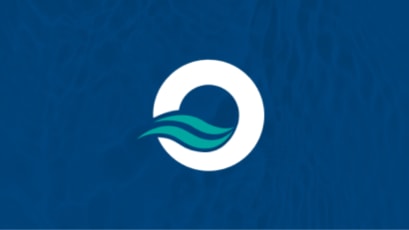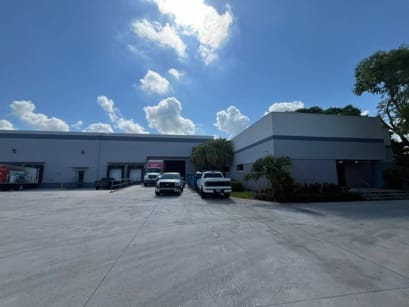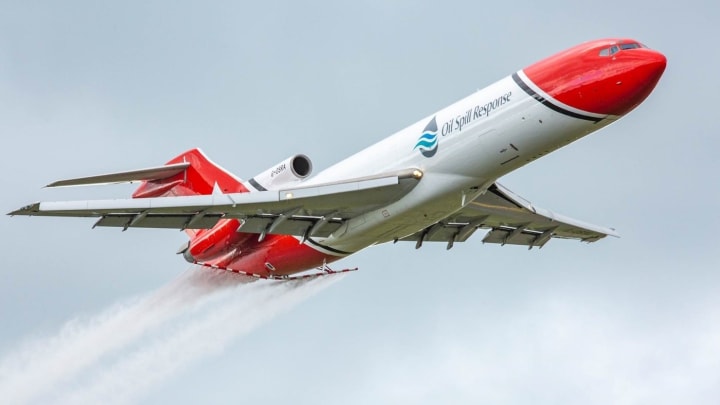
Oil Spill Response Limited (OSRL), the largest international industry-funded cooperative with the capability to respond to oil spills globally, has successfully worked with T2 Aviation to modify and deliver two former FedEx Boeing 727-2S2F (RE) aircraft.
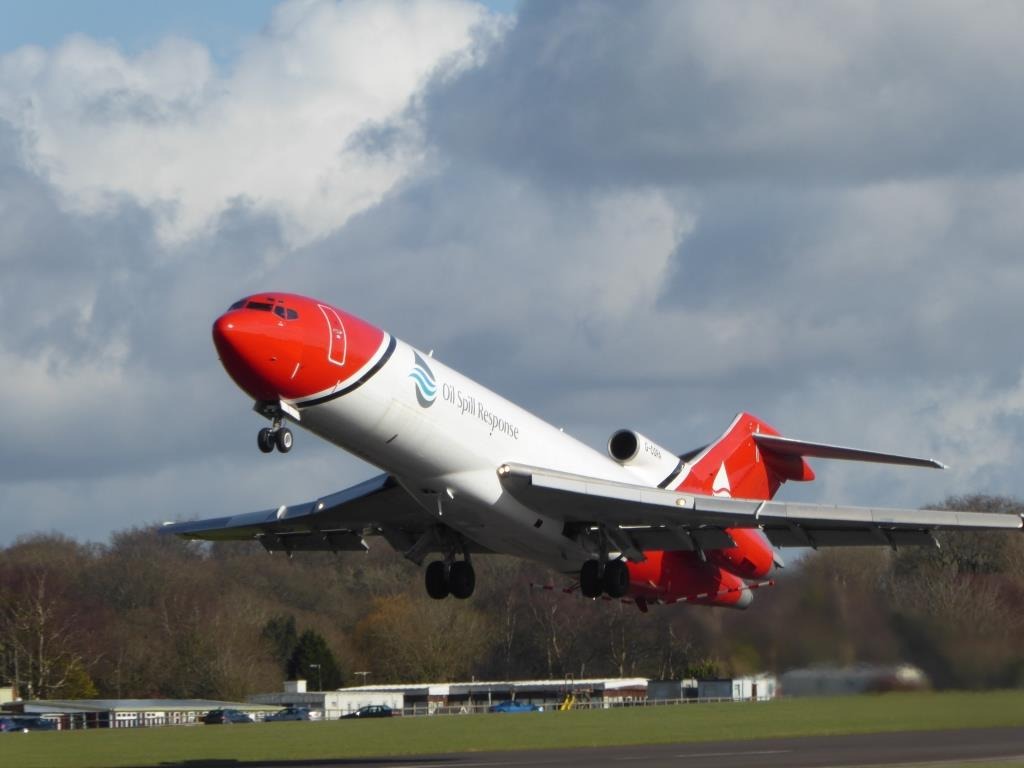
The aircraft, two Boeing 727-SS2F (RE), are now central to OSRL’s aerial dispersant capability and have now been officially launched during this year’s Farnborough International Airshow.
Fitted with internal tanks, pumps and a spray boom to deliver dispersant liquid, the specially adapted Boeing 727-2S2F (RE) aircraft are truly a first-of-a-kind capability for the oil and gas industry.
The Valsan engined 727-2S2F (RE) proved to be an ideal aircraft for OSRL, offering greater stability, adaptability and an almost unrivalled power to weight ratio.
“OSRL’s main requirement was to acquire a more up-to-date asset that could travel further and faster than its extant capability offered by the organisation’s L-382 Hercules” says Andy Offer, the Owner and Director of 2Excel Aviation Ltd.
Following the Macondo oil spill in 2010 a joint industry project was established to secure a suitable replacement for the OSRL Hercules.
"During the early stages of this project, the global regulations for aerial dispersants changed which meant that all aircraft dispersant systems needed to be compliant against flammable fluids."Andy, a former RAF Harrier pilot and Red Arrows leader.
T2 Aviation Limited won the tender to source, design, modify, certify and operate a wholly new capability for OSRL. The Boeing 727-2S2F (RE) was eventually chosen. A purpose-built freight aircraft, it offered the operational stability and long-range capabilities sought by OSRL. Built by Boeing in 1984, T2 Aviation acquired the last two Boeing 727-2S2F (RE) in a production of the 14 aircraft.
About the Boeing 727-2S2F (RE)
The 727-2S2F (RE) model proved to be an ideal aircraft for OSRL, offering greater stability, adaptability and an almost unrivalled power to weight ratio.
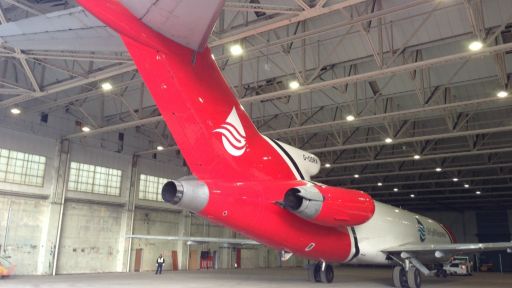
“Our main requirement was to acquire an asset that could travel further and faster than our L-382 Hercules,” says Robert Limb, OSRL’s Chief Executive.
In the unlikely event of an oil spill, dispersants can be used break down oil slicks into smaller droplets so that they can be more easily biodegraded. These dispersants minimise environmental and economic damage to people, habitats, and natural resources near and on the shoreline.
Because of their age the choice of the 727-2S2F (RE) aircraft offered a relatively low capital cost, while their metal frame meant that adapting and repurposing the aircraft was less challenging and expensive than had OSRL acquired a more modern aircraft made of composite materials.
Furthermore, the aircraft’s JT8D-217C Valsan high bypass ratio engines reduce the 727's noise outputs to comply with Stage 3 noise levels, while offering between six and seven per cent reduction in fuel consumption. The tri-engine design of the 727-2S2F (RE) offers an important level of redundancy and if one were to lose an engine, the asymmetric effect is reduced and it can still climb away rapidly.
The first aircraft, G-OSRA, was completed and certified for use on 1st April of this year, and is now stationed at [London Southend Airport, UK - 2023]. It is now ready to respond to incidents anywhere in the world within a four-hour notice. The second aircraft, G-OSRB, has now also been readied for service and is also stationed at [London Southend Airport, UK - 2023].
final-draft system specification was submitted to the Civil Aviation Authority (CAA) and the European Aviation Safety Agency (EASA), and these have been approved. The documents have also been reviewed by the US Federal Aviation Administration (FAA). Both EASA and the FAA have now adopted the same certification standards for future large dispersant aircraft.
Throughout 2014, 2Excel and OSRL rewrote all the certification standards for dispersant-spraying aircraft in partnership with the regulating authorities. The new regulations stipulate that dispersant spray systems must comply with the latest flammable fluid certification requirements such as: double-skinned tanks and pipework, the ability for the system to maintain structural integrity in a crash with forces up to 9g and the capability of being vented or drained to atmosphere plus a plethora of other complex compliance requirements.
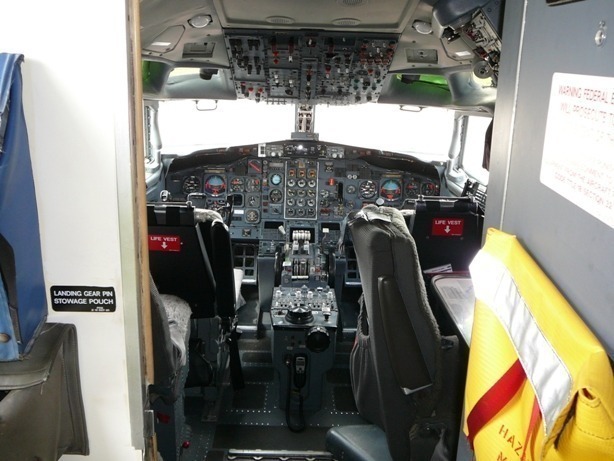
2Excel operates under a global Air Operator’s Certificate allowing unhindered operations throughout the world. However, building a dispersant system of this magnitude that is compatible with flammable fluids was an enormous challenge.
"Initially, we contracted a company called Aerodac to perform the work, but during the project they got into financial difficulty and in order to maintain the momentum of the project we took over the company and managed the work and risks internally. Overall, it was an extremely complex project; however, we have overcome all the issues and have been awarded a Supplemental Type Certificate (STC) for our system with flammable fluids. This is the only system in the world which is compliant with flammable systems for use in large aircraft – an amazing feat,” says Andy.
Under the hood
-
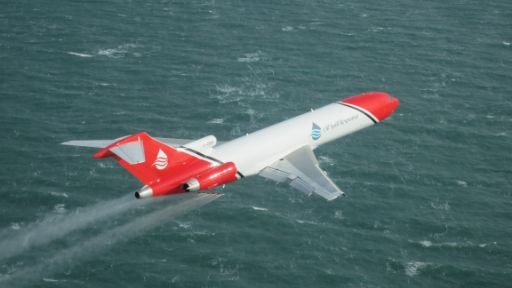
The Boeing 727 is highly distinctive because of its three engines and a high T-Tail design. The middle engine, or engine 2, is stationed at the very rear of the fuselage and obtains air from an inlet ahead of the vertical fin through an S-shaped duct.
The aircraft has a built-in Auxiliary Power Unit (APU), which is mounted in a hole in the keel beam web in the main landing gear bay. This allows the aircraft to have power for electrical and air-conditioning and not to have the main engines running while sitting on the ground; the APU is also used to restart the engines.
To be able to use the required shorter runways the Boeing 727 has a unique wing design. With no wing-mounted engines, leading-edge devices (Krueger, or hinged, flaps on the inner wing and extendable leading edge slats out to the wingtip) and trailing-edge lift enhancement equipment (triple-slotted, aft-moving flaps) can be used on the entire wing. Together these high-lift devices produced a maximum wing lift coefficient of 3.0 (based on the flap-retracted wing area).
The 727 is very stable at very low speeds compared to other early jets. A key feature is the aircraft’s ability to use a very short runway. The nose wheel brakes are available as an option to reduce braking distance on landing which provides reductions in braking distances of up to 150m. Another important feature is that the 727 is equipped with a retractable tail skid that is designed to protect the aircraft in the event of an over-rotation on take-off.
-
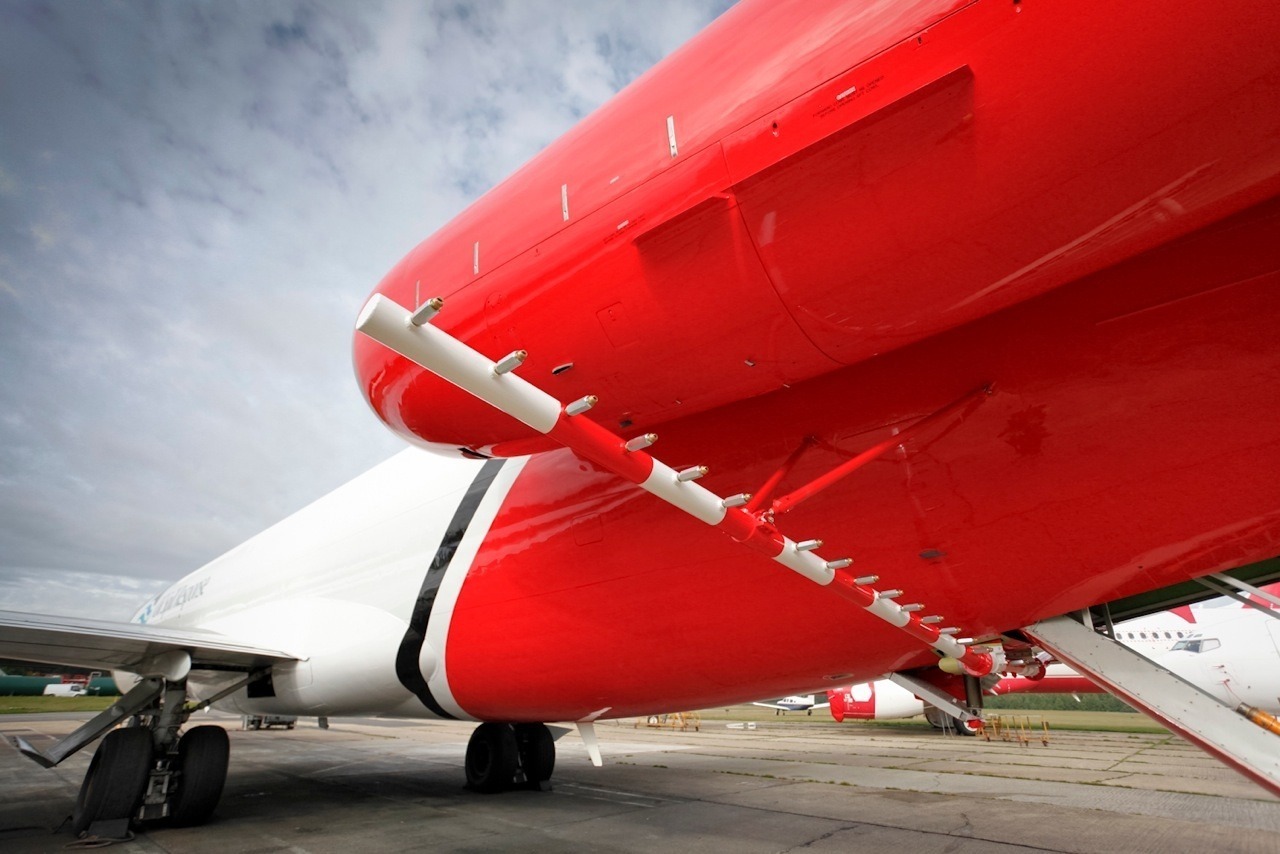
Tersus system, which has been developed for the OSRL 727-2S2F(RE) aircraft, has seven tanks that hold 15,000 litres of dispersant. There are also pallets for the pump systems, which are pre-armed and recirculate the fluid so the system can begin spraying without delay. These systems can be controlled from the cockpit. Spray operations are performed at speeds of around 150 kt. and altitudes of 150 ft.
-
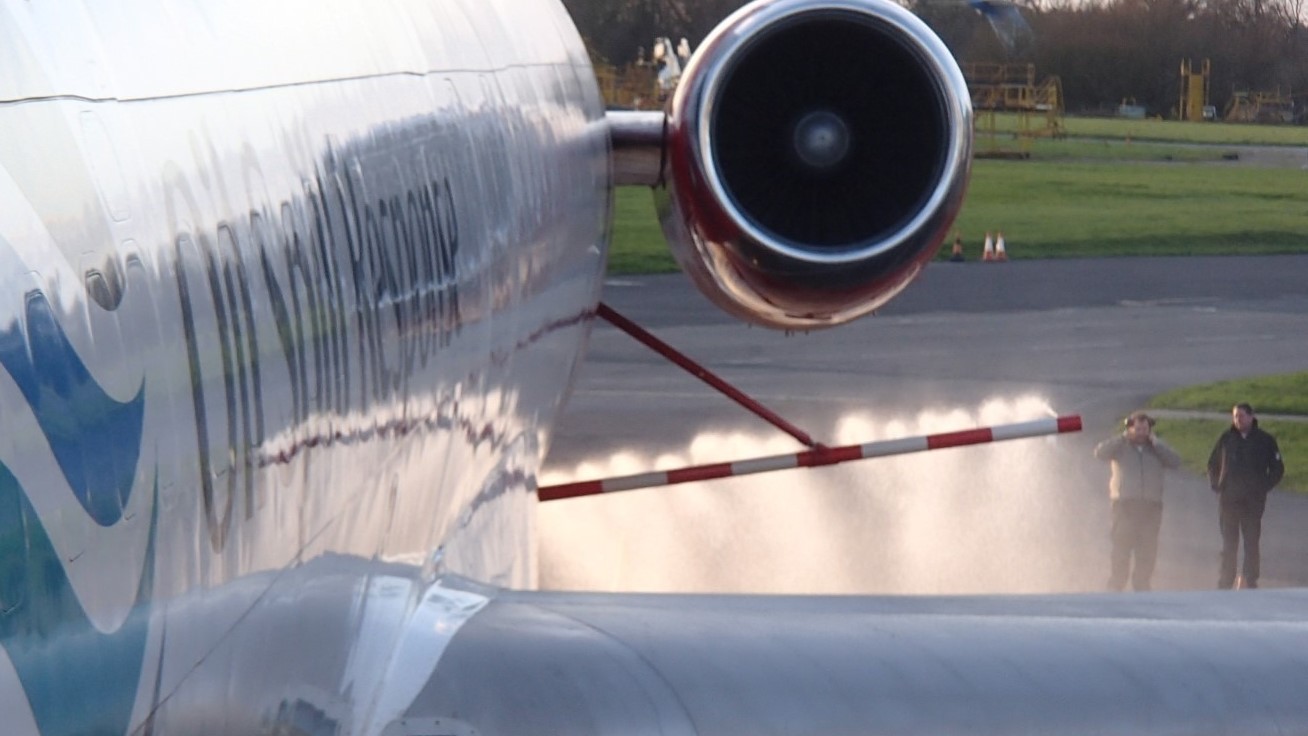
OSRL’s 727-2S2F (RE) aircraft began their working life with FedEx, equipped with the original Pratt & Whitney JT8D-9/15 engines, and were subsequently fitted with higher bypass, more efficient, JT8D-217C engines, as part of the Valsan programme. This ensures that the 727-2S2F (RE) aircraft are compliant with Stage 3 noise regulations. The modification removed the existing JT8D-9/15 on the one and three outboard positions and replaced them with the high bypass engines. The original, tail-mounted, number two engine is retained, but equipped with a new acoustic exhaust mixer and used at low power setting at takeoff and landing.
-
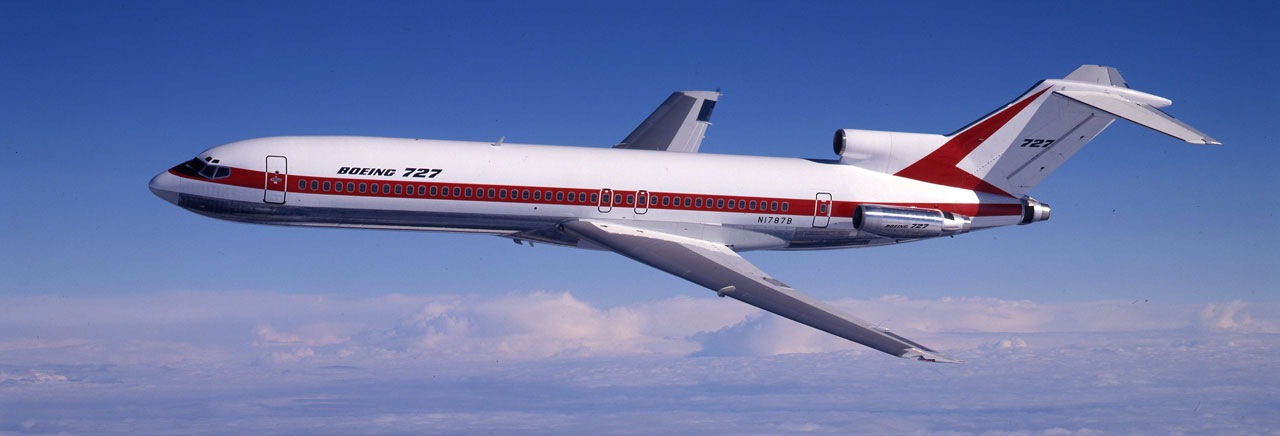
Boeing is 100 years young this year. Yes, the aircraft manufacturer that has brought us the world famous Boeing 747, as well as a host of important local and global ‘airborne people-movers’ has reached its centenary this year.
Despite the fame of the 747 ‘Jumbo’ Jet and the more recent ‘Dreamliner’, or Boeing 787, it was the Boeing 727 that has proved to be one of the company’s biggest success stories. It was the first commercial aircraft to break the 1000-sales barrier and was designed to service smaller airports with shorter runways than had previously been used by the intercontinental Boeing 707.
With its distinctive appearance and its rakish T-shaped tail the Boeing 727 carried billions of passengers on everything from short hops to cross-country flights. It was also the first Boeing jetliner to undergo rigorous fatigue testing, the first to have completely powered flight controls, the first to use triple-slotted flaps and the first to have an auxiliary power unit (APU). The APU was an important innovation in its own right. A small gas-turbine engine that eliminated the need for ground power, or starting equipment in the more rudimentary airports in developing countries.
Originally, Boeing had planned to sell only 250 aircraft when it first flew in 1962. However, they proved so popular (especially after the larger 727-200 model, which carried up to 189 passengers, was introduced in 1967) that a total of 1,832 were produced at the Renton, Washington plant.
Variants included a convertible passenger-cargo model with a Quick Change (QC) option — seats and galleys attached to removable pallets.
In September 1984, after a 22-year production run, the last of 1,832 727s was delivered - a 727-2S2F (RE) to Federal Express, ‘FedEx’.
The once “very risky” 727 had become one of the greatest selling commercial jets in history.

